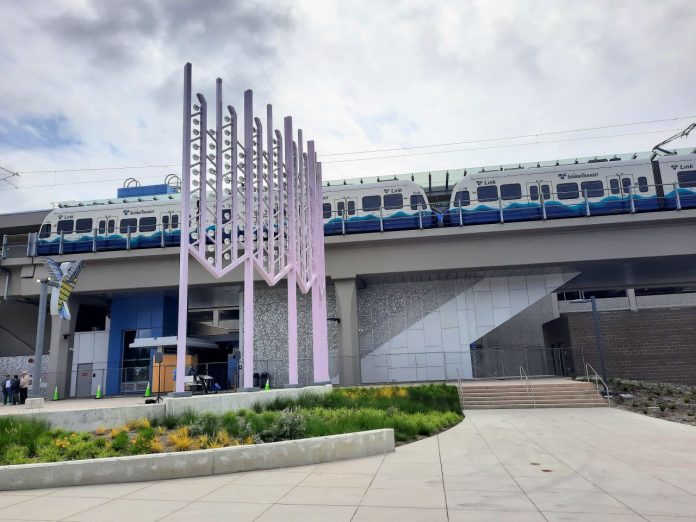Link light rail will extend north beyond Seattle for the first time on Friday, and Lynnwood Link anticipation is reaching a fevered pitch. Sound Transit hosted The Urbanist and other media members for a tour of Lynnwood City Center station earlier this month, along with artists who crafted the station art.
The greater station area was a hive of preparation, train testing, and construction activity, but the pieces were coming together. The entrance is graced by an attention-grabbing signature sculpture work, dubbed City Hummingbird and Kitchen Window Curtain, which artist Claudia Fitch says “honors the rich history of neon road signs that once lined Highway 99.”
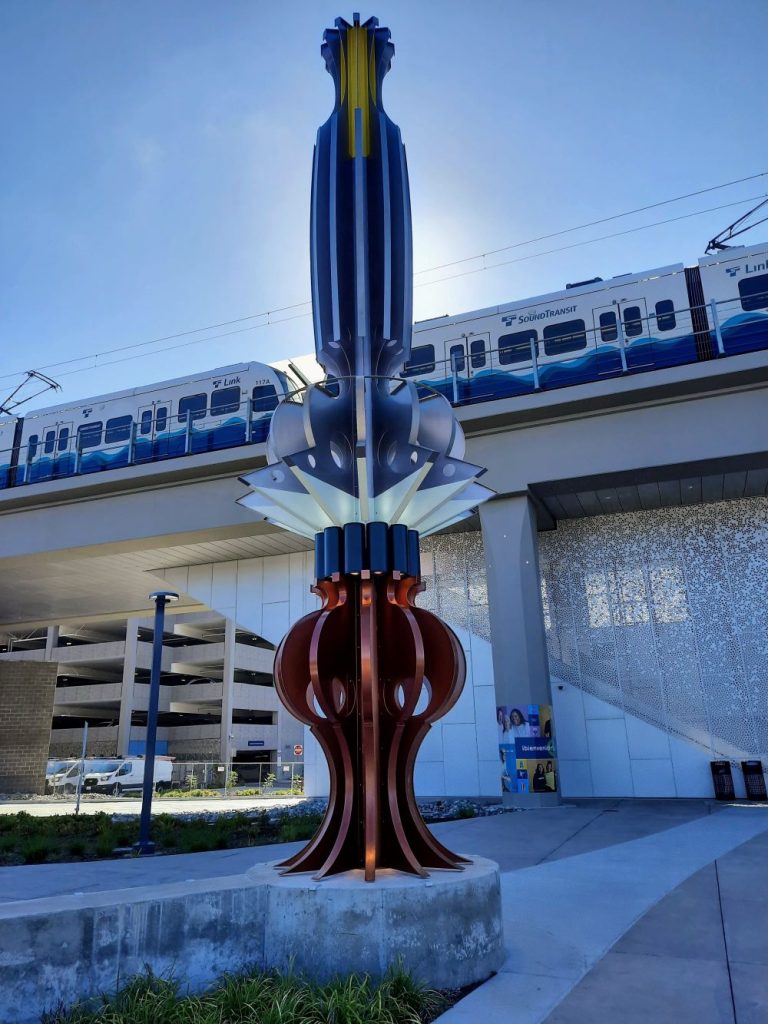
Sound Transit also incorporated two existing sculptures into the station design, repurposing them from their original location at the old transit center entrance. “Claudia Fitch’s Shift originally graced Lynnwood Transit Center’s entrances, intended to promote pedestrian safety by marking key crosswalks,” the agency noted. “In their current location, the two sculptures help guide passengers to the south station entrance.”



With the start of service, Lynnwood will become the northern terminus for Sound Transit’s light rail system until an extension north to Everett opens by 2037. Tri-county voters approved the Lynnwood Link extension as part of the Sound Transit 2 ballot measure in 2008, while the Everett extension was part of the Sound Transit 3 measure approved in 2016.
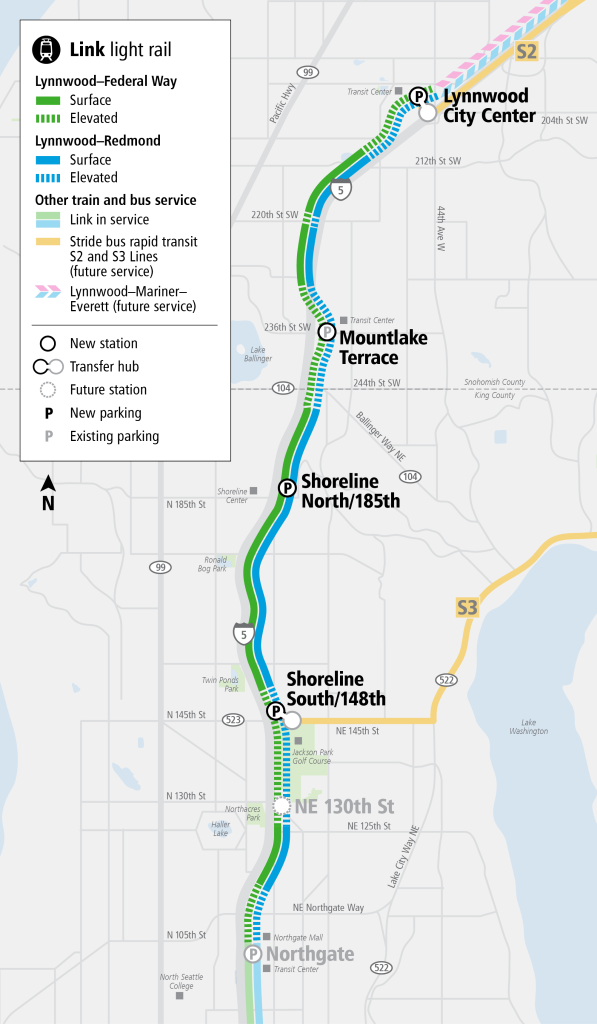
Lynnwood Link will bring four more 1 Line stations online: South Shoreline, North Shoreline, Mountlake Terrace, and Lynnwood City Center. An additional infill station at N 130th Street in Seattle (eventually to be accompanied by a zoning overhaul to grow a neighborhood around it) will open by 2026.
Station access and bus connections
Sound Transit projects that Lynnwood Link will add about 50,000 daily riders to the system by 2026, although that projection was made before the pandemic sapped some regional ridership momentum. On the existing 1 Line, average weekday boardings hit a record high above 90,000 in July 2023. Lynnwood Link’s addition should push the system well above 100,000 daily boardings.
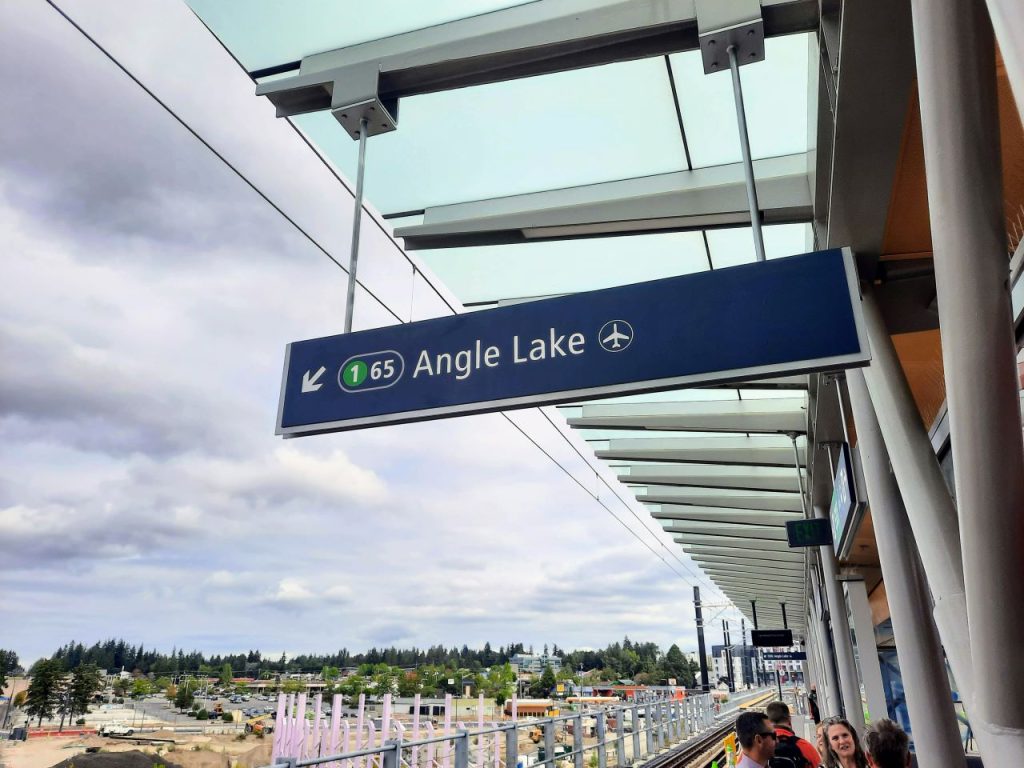
The opening will also kick off Sound Transit’s $3 flat fare system that will make all light rail trips cost the same amount, as opposed to the distance-based fares that had been in place until now. Plus, Sound Transit is numbering its stations for the first time, so riders will notice an associated station number next to the name on signage, with the old pictograms south of Shoreline all removed. Goodbye, Northgate dragonfly.
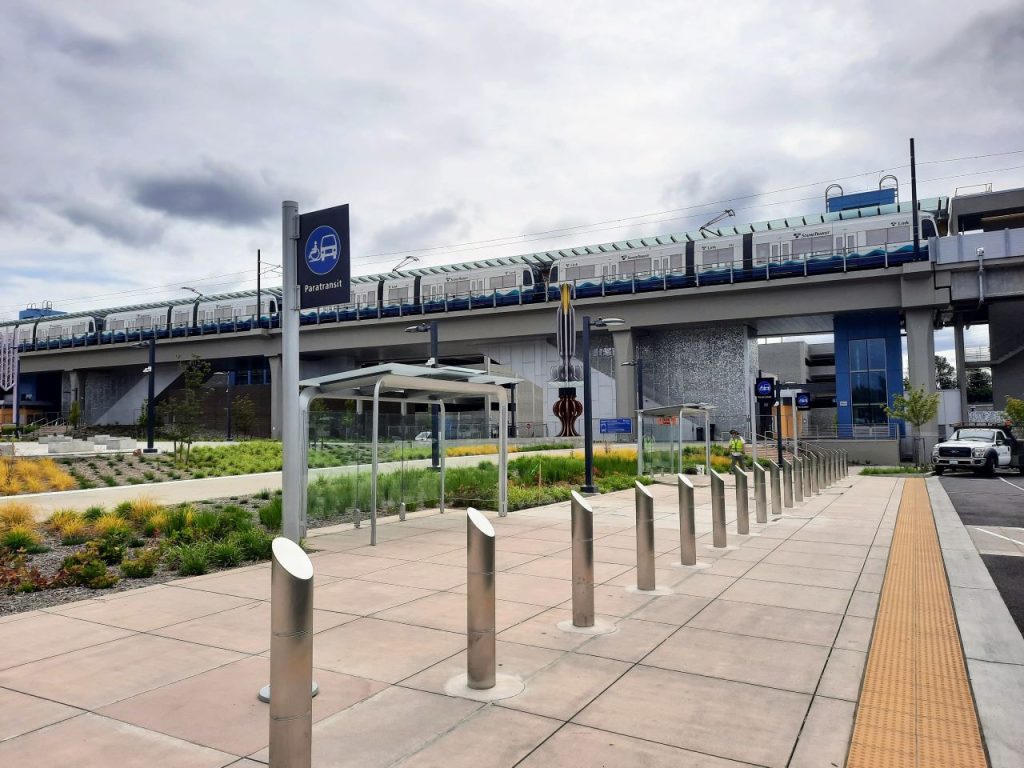
This spring, Community Transit launched the Swift Orange Line, greatly improving bus connections to Lynnwood City Center. The rest of Snohomish County’s bus restructure will wait for September 14 — two weeks after the launch of the light rail extension — as part of the annual fall service change. Lynnwood Mayor Christine Frizzell noted half of Snohomish County’s buses end up at Lynnwood City Center, making it the premier hub for the area.
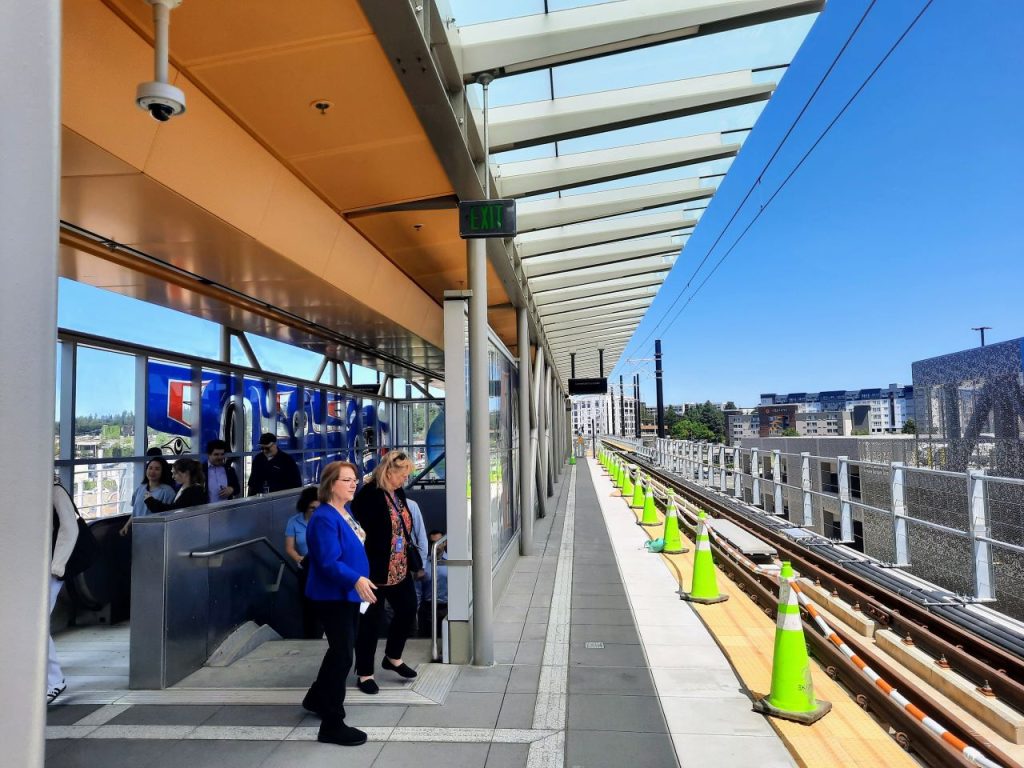
“People are going to be able to get from here to where they want to be, whether it’s for entertainment or for work or for family, and it is just going to be a game changer for all of us,” Frizzell said. “The new Lynnwood Transit Center is part of a comprehensive vision for how our city operates. That’s why our city planners have collaborated with affordable housing developers, Community Transit, Snohomish County, service providers, and businesses to ensure that this transit hub is a center of a vibrant new community as well. In Lynnwood, we have a model: All are welcome here. We are the most diverse city in all of Snohomish County.”
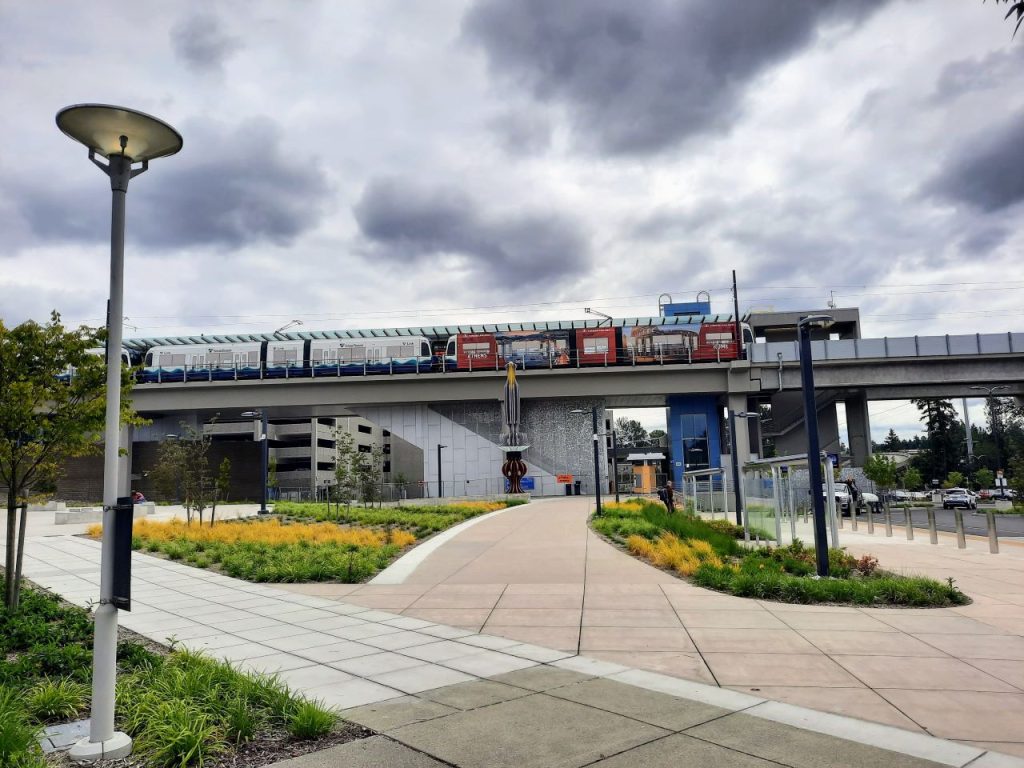
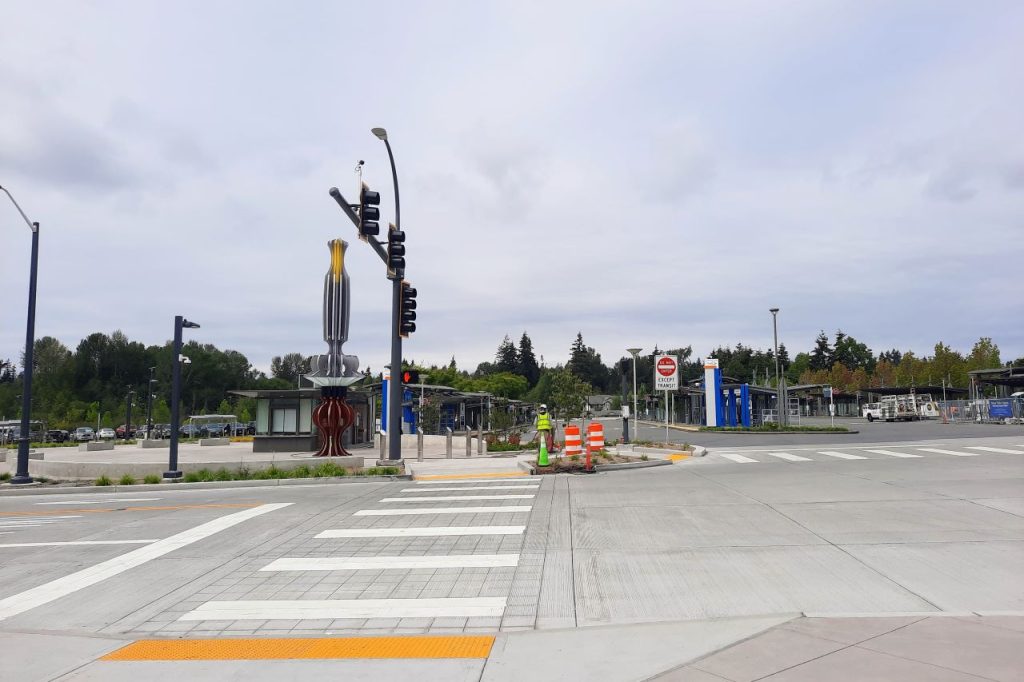
Not all of the station access improvements have been entirely transit focused. Lynnwood recently wrapped up a major expansion of its main east-west corridor of 196th Street SW, with the goal of moving more car traffic but also providing more reliable bus trips and adding pedestrian space. And, of course, Sound Transit has built a five-story, 1,670-stall parking garage next to the station.
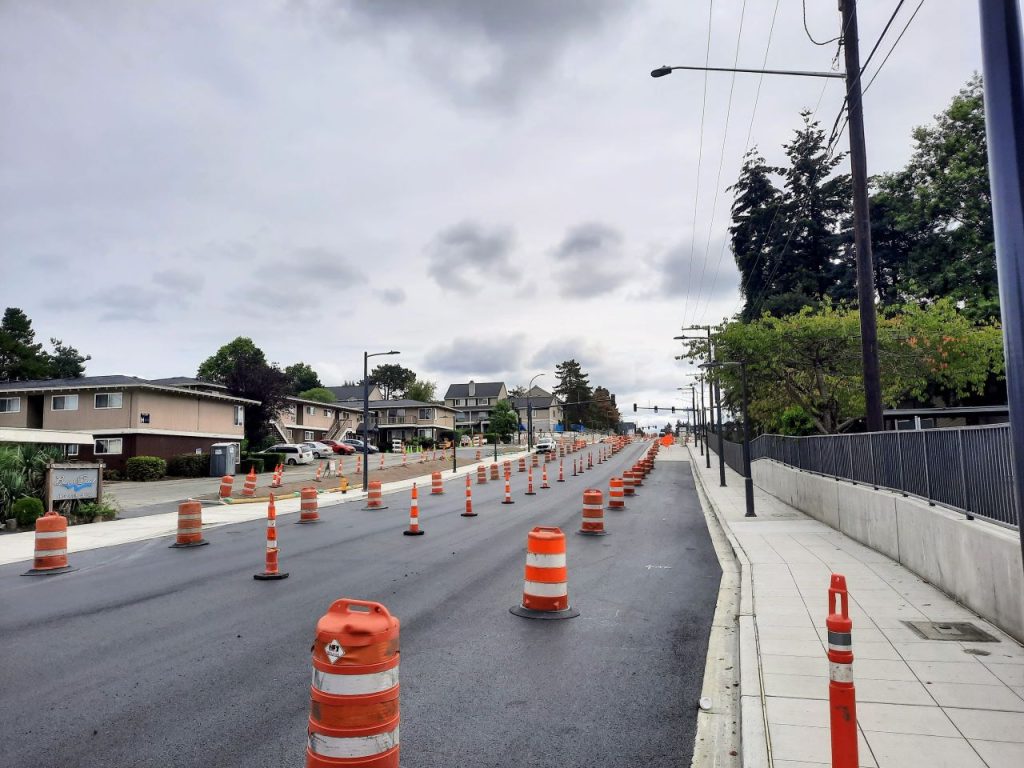
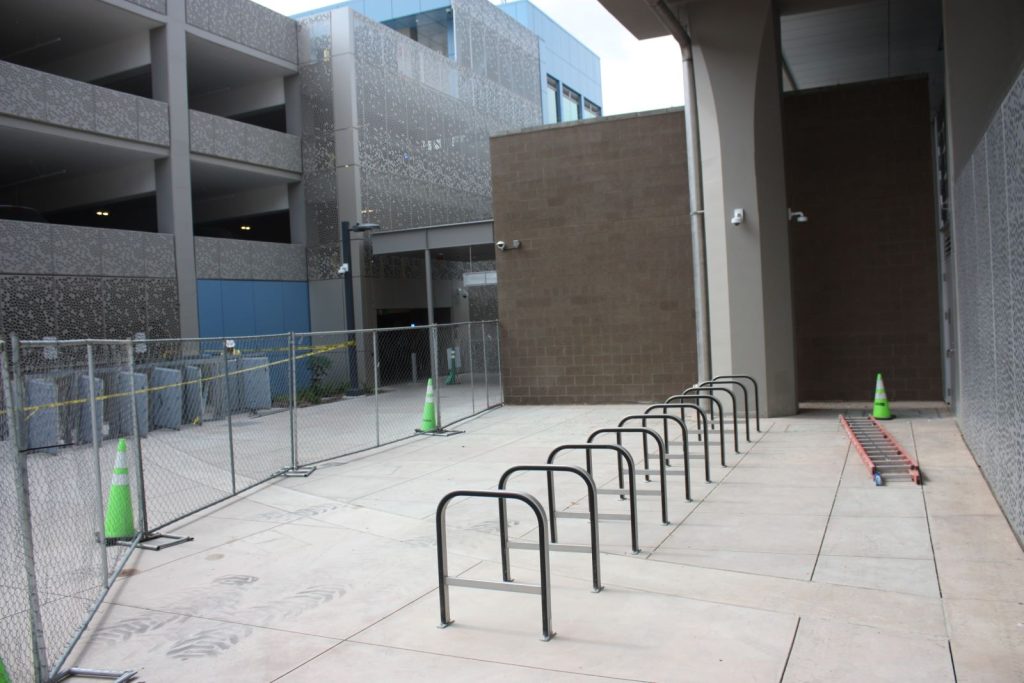
Additionally, a new Scriber Creek Trail provides a scenic boardwalk through a meadow for people walking, rolling, and biking, providing a cut-through to the south or direct access to Scriber Creek Park. Albeit with a gap at Cedar Valley Road, the trail system follows Scriber Creek westward, eventually hitting the larger Scriber Lake Park to the northwest.
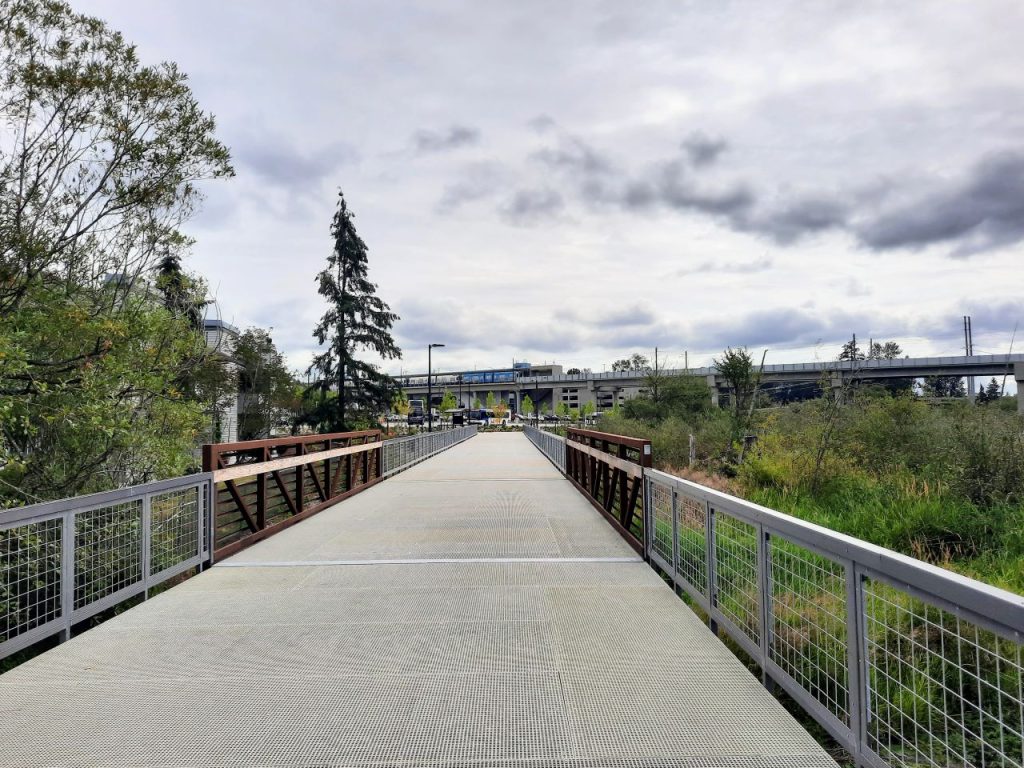
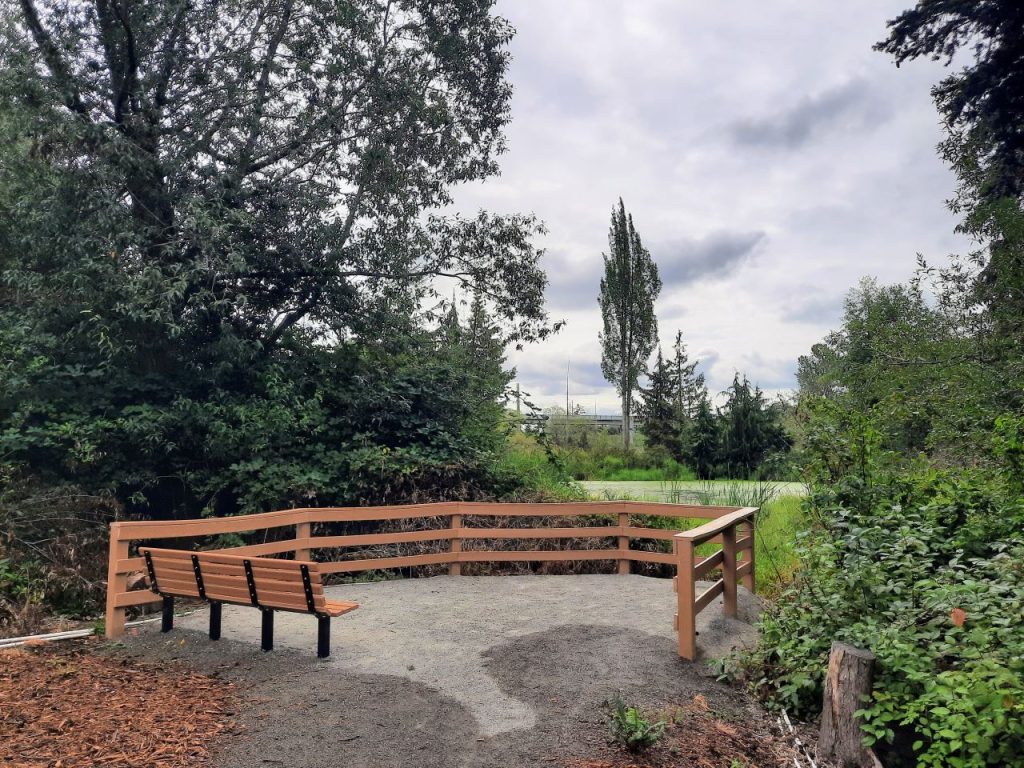
For those checking out Lynnwood anew, Frizzell recommended sampling the diverse cuisine the city has to offer.
“Check out our restaurants,” Frizzell said. “We have such diverse restaurants in Lynnwood. You can get African food, you can get Mideastern food, you can get Russian, Ukrainian, Korean. That is a kind of a microcosm of who we are in Lynnwood, as I said in my comments, we’re the most diverse city in Snohomish County, and we love it. We love that people feel comfortable to bring their families here, to create a home, to create businesses, to create space for them as maybe they’re relocating from another country. They bring their culture to us, which is so exciting.”
Booming station neighborhoods
The new transportation infrastructure serves a growing population. The last state estimate from April put Lynnwood’s population at 41,500, which is up nearly 3,000 residents from its 2020 census figure.
Most of Lynnwood’s housing growth has taken place farther afield than the immediate station area, which continues to be largely parking lots and construction staging. However in the blocks beyond, Lynnwood has more than 3,000 homes in development in its “City Center” neighborhood.
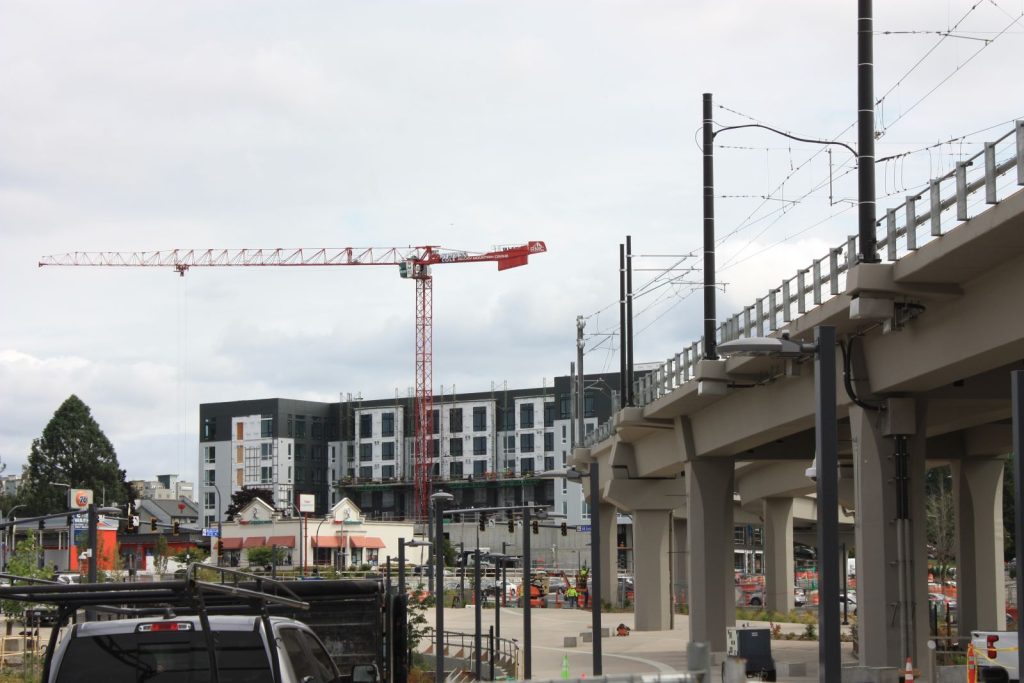
Perceived growing pains had led some of the city council to grow pensive and contemplate pumping the brakes — although a majority ultimately greenlit additional growth, with a faster permitting track for up to 6,000 units. Frizzell pledged that the Lynnwood Comprehensive Plan, which is due for an update by year’s end, would continue to support efforts to add housing near light rail for people at all income levels.
Frizzell said adding housing density at the Lynnwood City Center has been the City’s plan for a very long time, going back to the 1993 Legacy Lynnwood Project.
“I have a document that I keep on my desk that reminds me,” Frizzell told The Urbanist. “It was 200 community members that came together over a long period of time that said: ‘these are our hopes and dreams for our city. This is what we want.’ I have maps. It shows Sound Transit right where it’s at. I have information there about bus routes. I have information about housing. And we are on track. We are doing what our community is asking for.”
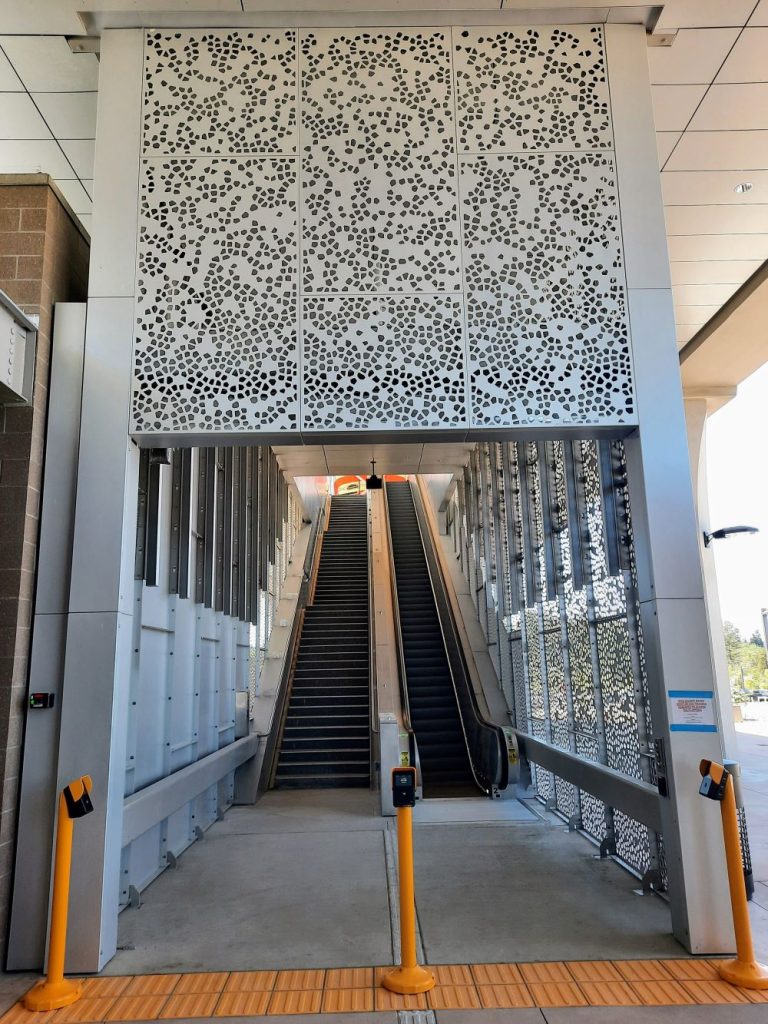
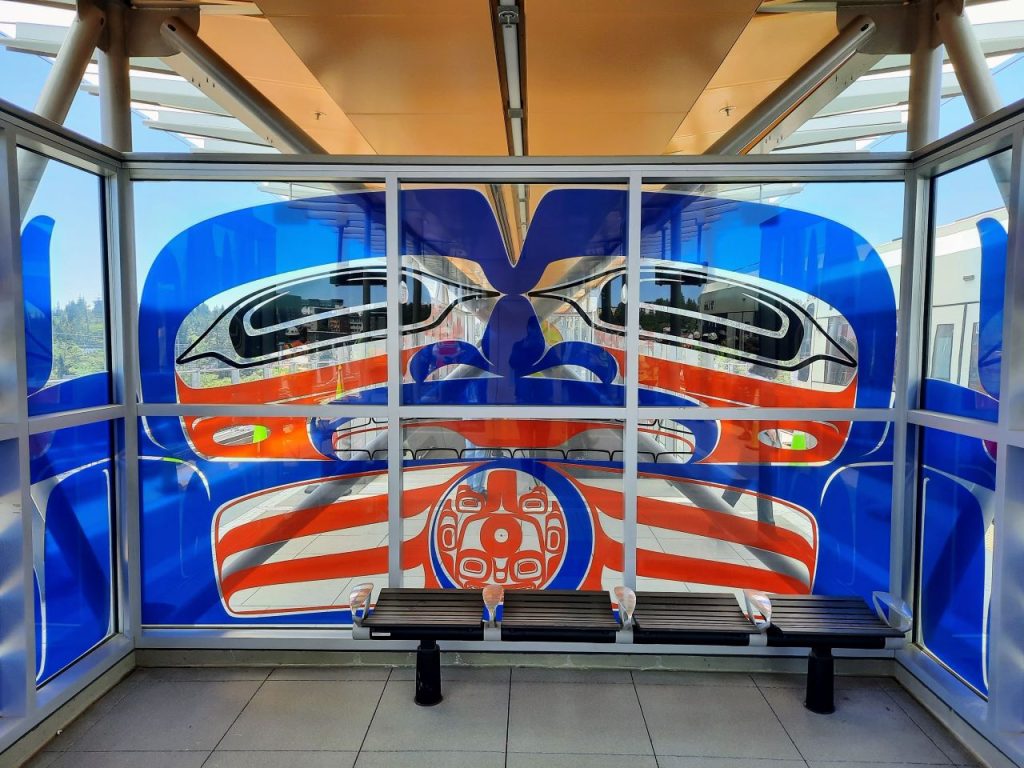
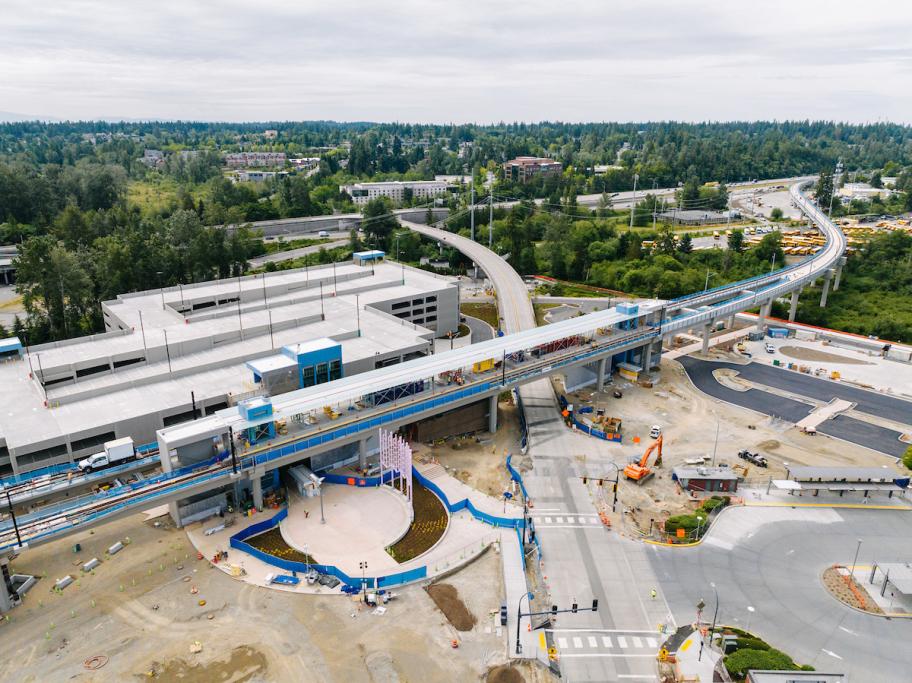
Frizzell said nature and green space is core to Lynnwood’s identity and that the city intends to grow in a way to preserve that identity.
“We don’t want to push people together,” Frizzell told The Urbanist. “This was a single family neighborhood for many years, and for many years, single family neighborhoods were more on one side of the city, and we were permitting and allowing multifamily housing on the other so we encourage people to be out towards the mall, to be in our city center. And that has been the plan for a long time.”
Now, Lynnwood City Center is not just a few token apartment buildings, but a true growth center and actually fledgling urban neighborhood.
“Are there going to be some people that are naysayers or or they’re concerned? You betcha, that’s life, and we want to be considerate of all of those views and make sure that people have space to live, work, grow, play here in Lynnwood,” Frizzell said. “And we’re so proud of our parks, and I’m a big proponent of having green spaces, and I love to be out in our parks all the time, on the Interurban Trail. We need that green space to help us thrive in our lives, and I think we have to find that balance of green space and housing.”
Shoreline and Mountlake Terrace are both adding housing at a fairly ambitious clip, as well. More than 1,800 homes were recently built or are in development near Mountlake Terrace Station, according to The Urbanist‘s tally. Meanwhile, the Shoreline South and Shoreline North station areas are together adding more than 4,800 homes.
2 Line inbound to Lynnwood, eventually…
Eventually Lynnwood Link stations will serve both 1 Line and 2 Line trains, with the latter turning toward Bellevue and Redmond after making it through Downtown Seattle. However, for at least the first year of service, the stations will see 1 Line trains only. Lynnwood Link’s opening being relatively on time while East Link has faced significant delays to construction defects along I-90 tracks, has meant it has leapfrogged the full opening of the 2 Line.
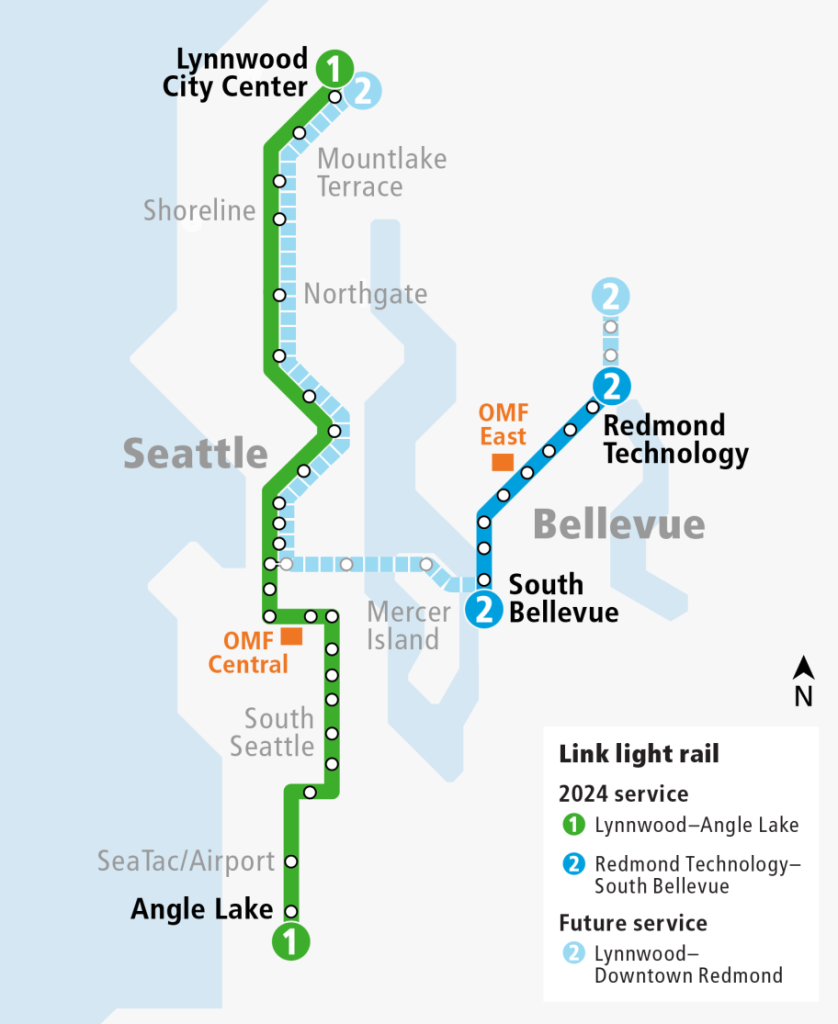
This, in turn, has upset Sound Transit’s operational plans. An abbreviated Eastside-only version of East Link opened on April 27, but the agency does not expect the 2 Line to cross Lake Washington to Seattle (and on to Lynnwood) until late 2025 due to the need to address extensive construction defects in the I-90 segment. That leaves Sound Transit’s new maintenance base in Bellevue inaccessible from the 1 Line, forcing Sound Transit to launch Lynnwood Link with fewer trains than it hoped.
Initially, Sound Transit warned this could mean severe crowding on the 1 Line, but the agency was able to adapt its plan to squeeze some additional frequency out of the system. Among the tweaks that made it possible was storing some additional trains (36 vehicles to be exact) at elevated stations, supplementing the capacity of its SoDo train base.
With extra vehicles on hand, Sound Transit is improving scheduled frequencies to every eight minutes during weekday peak hours using four-car trains. Last fall, the agency had forecast service levels closer to every ten minutes during weekday peak hours with some trips only having three-car trains. The three-car trains were expected to contribute to crowding issues, considering the demand being added to the system with the four Lynnwood Link stations.
Once fully provisioned, Sound Transit aims to have trains arriving at Lynnwood Link stations every six minutes or better during peak hours, but the agency may have underestimated how many trains it needs to achieve desired frequencies as the system expands.
For now, riders will be excited to ride the 1 Line to Lynnwood and point between starting at noon Friday, and see the changes the light rail line has already brought to fruition along the way.
Doug Trumm is publisher of The Urbanist. An Urbanist writer since 2015, he dreams of pedestrian streets, bus lanes, and a mass-timber building spree to end our housing crisis. He graduated from the Evans School of Public Policy and Governance at the University of Washington in 2019. He lives in Seattle's Fremont neighborhood and loves to explore the city by foot and by bike.

